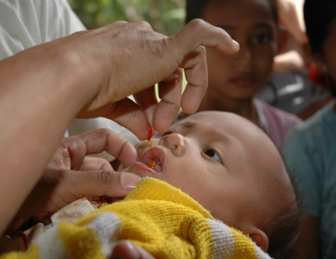
From 2000 to 2014, Cambodia more than doubled the rate of deliveries assisted by a skilled provider from 32 to 89 percent and the use of modern contraceptives from 19 to 39 percent. USAID has contributed to these impressive gains by helping strengthen national policies and systems, expand community outreach, and improve access to quality services. USAID also assisted in the expansion of the Health Equity Fund to all health facilities nationwide, which has allowed more than 3 million poor Cambodians to access health services free of charge. USAID is also helping to strengthen government health systems, including information and logistics systems, and improve health financing.
USAID’s programs have helped reduce the HIV prevalence from 1.7 percent in 1998 to 0.6 percent in 2015 by improving the quality of HIV services, developing innovative ways of finding the last cases and improving the cost effectiveness of the HIV response. It has supported the national TB-control program to reduce TB prevalence and deaths by more than half and continues to improve the quality of TB services. USAID also helps to improve detection rates of new TB cases and maintain treatment success rates of up to 90 percent. While the number of malaria cases was almost halved between 2004 and 2014, the Cambodia-Thai border continues to be epicenter of artemisinin-resistant malaria. USAID is strengthening malaria control and prevention and surveillance, monitoring drug resistance, and piloting elimination activities. USAID’s avian influenza program has raised public awareness about this growing problem and strengthened national- and provincial-level capacity to respond to suspected outbreaks.








Comment
Make a general inquiry or suggest an improvement.